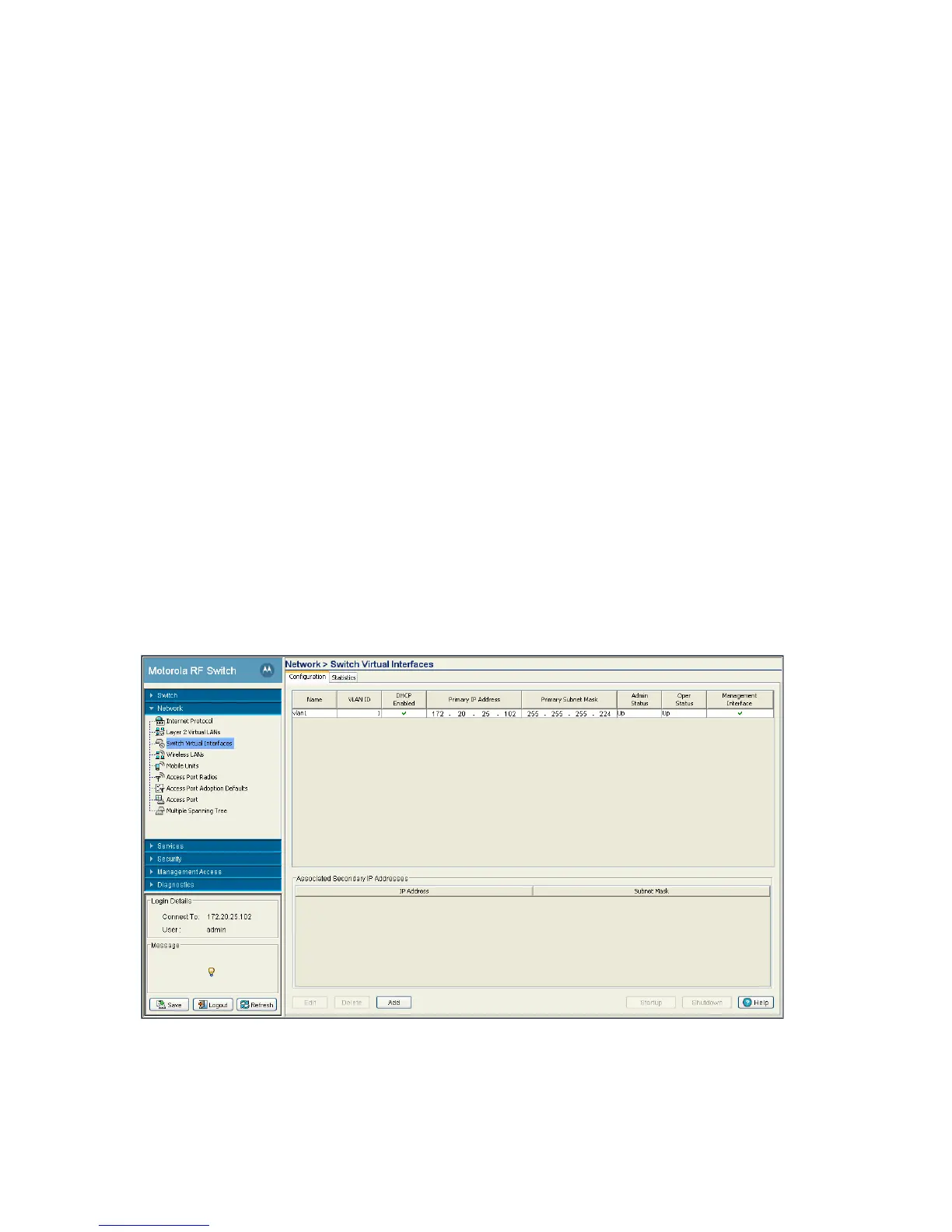Network Setup 4-13
6. Click OK to use the changes to the running configuration and close the dialog.
7. Click Cancel to close the dialog without committing updates to the running configuration.
4.4 Configuring Switch Virtual Interfaces
A Switch Virtual Interface (SVI) is required for layer 3 (IP) access to the switch or to provide layer 3 service
on a VLAN. The SVI defines which IP address is associated with each VLAN ID that the switch is connected
to. An SVI is created for the default VLAN (VLAN 1) to enable remote switch administration. An SVI is also
used to map VLANs to IP address ranges. This mapping determines the destination networks for switch
routing.
Each IP address range (IP Address and Subnet Mask) can be mapped to one (and only one) VLAN ID. A VLAN
ID does not require an IP address be defined on the switch. Each VLAN ID must be mapped to a physical port
using the Layer 2 Virtual LANs configuration to communicate with the rest of the network.
Use the Switch Virtual Interfaces screen to view and configure VLAN interfaces. This screen contains two
tabs supporting the following activities:
• Configuring the Virtual Interface
• Viewing Virtual Interface Statistics
4.4.1 Configuring the Virtual Interface
Use the Configuration screen to view and configure the virtual interface details.
1. Select Network > Switch Virtual Interface from the main tree menu.
2. Select the Configuration tab.
The following configuration details display in the table:
Name Displays the name of the virtual interface.
VLAN ID Displays the VLAN ID associated with the interface.

